Pricing Guides & Dictionary of Makers Marks for Antiques & Collectibles

ANTIQUE & COLLECTIBLE HURRICANE LAMPS:
A Guide for Enthusiasts
Join the most updated and complete collectibles research online - Learn more...
 Antique and collectible hurricane lamps are a popular item for enthusiasts and collectors alike. These lamps have been around for centuries and have gone through many different styles and designs over the years. In this guide, we will explore the history of hurricane lamps, the different types and styles available, and tips for collecting and caring for these unique and beautiful lamps.
Antique and collectible hurricane lamps are a popular item for enthusiasts and collectors alike. These lamps have been around for centuries and have gone through many different styles and designs over the years. In this guide, we will explore the history of hurricane lamps, the different types and styles available, and tips for collecting and caring for these unique and beautiful lamps.
In addition, we will also discuss how to spot reproductions and how to determine the condition of an antique hurricane lamp. Whether you are a seasoned collector or just starting out, this guide will provide you with all the information you need to appreciate and care for your antique and collectible hurricane lamps.
The History of Hurricane Lamps
The hurricane lamp has been in use since the 1700s and was originally designed as a portable light source for sailors and travelers. These lamps were made with a glass chimney to protect the flame from wind and to provide a steady source of light. In the 1800s, hurricane lamps became popular in homes, particularly during times of power outages.
During the Victorian era, hurricane lamps were often made with ornate designs and were considered a status symbol. Many of these lamps were made with colorful glass shades, decorative metalwork, and elaborate bases.
After the invention of electricity, hurricane lamps fell out of favor, but they experienced a resurgence in popularity during the mid-20th century. Today, hurricane lamps are sought after by collectors and enthusiasts alike for their beauty, history, and functionality.
Types and Styles of Hurricane Lamps
There are many different types and styles of hurricane lamps, each with its own unique features and design elements. Here are a few of the most popular types of hurricane lamps:
- Oil Lamps - These are the traditional hurricane lamps that were originally used for portable lighting. They are fueled by oil and have a glass chimney to protect the flame. Oil lamps come in many different styles and designs, from simple and utilitarian to ornate and decorative.
- Electric Lamps - These are modern versions of the traditional hurricane lamp that are powered by electricity. They often have a vintage or antique look to them and can be found in many different styles and designs.
- Candle Lamps - These are small hurricane lamps that are designed to hold a candle. They are often used for decoration and can be found in many different styles and designs.
- Victorian - These lamps are ornate and decorative, with intricate metalwork and colorful glass shades.
- Art Deco - These lamps have a sleek and modern look, with simple lines and geometric shapes.
- Rustic - These lamps have a more natural and organic feel, with wooden bases and simple glass shades.
- Industrial - These lamps have a utilitarian look, with metal bases and exposed bulbs.
Collecting and Caring for Hurricane Lamps
If you're interested in collecting hurricane lamps, there are a few things you should keep in mind. Here are some tips for collecting and caring for these unique and beautiful lamps:
- Do your research - Before you start collecting hurricane lamps, do some research to learn about the different styles and designs. This will help you identify valuable pieces and avoid reproductions.
- Inspect the lamp - When purchasing a hurricane lamp, be sure to inspect it carefully for any damage or repairs. Look for chips or cracks in the glass, and make sure the metalwork is intact and free from rust or corrosion.
- Store the lamp properly - When not in use, store your hurricane lamp in a cool, dry place away from direct sunlight. This will help prevent damage to the glass and metal components of the lamp.
- Clean the lamp carefully - When cleaning your hurricane lamp, use a soft cloth or brush to remove any dust or debris. Avoid using harsh chemicals or abrasive cleaners, as these can damage the glass and metal. If you need to clean the glass, use a gentle glass cleaner and be sure to dry it thoroughly afterwards.
- Consider the condition - When collecting hurricane lamps, the condition of the lamp is an important factor in determining its value. Lamps that are in excellent condition with no damage or repairs are more valuable than lamps that have been damaged or repaired.
- Be aware of reproductions - There are many reproductions of antique hurricane lamps on the market, so be sure to do your research and know what to look for to identify authentic pieces. Look for signs of wear and tear, such as scratches and chips, which are often present on older lamps but not on reproductions.
Conclusion
Antique and collectible hurricane lamps are a fascinating and beautiful part of history, and they make a wonderful addition to any collection or home decor. With their unique design and history, these lamps offer a glimpse into the past and a reminder of simpler times. Whether you're a seasoned collector or just starting out, be sure to do your research, inspect each lamp carefully, and care for them properly to ensure they remain beautiful and functional for many years to come.
Unlock the true value of your collection with our comprehensive research guides from identifying makers' marks to appraising all kinds of antiques and collectibles, including items featured in this article.
Our up-to-date information will give you an accurate understanding of your items' worth. Don't miss out on this valuable resource - visit our research tools today!
In addition to some examples shown below on this page, you can also search our price guide for your own treasures.
Examples of related items from our Price Guides
-
 George Rodrigue (American/Louisiana b. 1
[more like this]
George Rodrigue (American/Louisiana b. 1
[more like this]
-
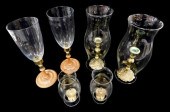 THREE PAIRS OF BRASS REPRODUCTION CANDLE
[more like this]
THREE PAIRS OF BRASS REPRODUCTION CANDLE
[more like this]
-
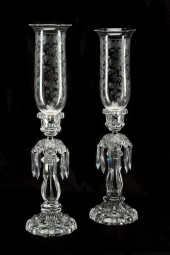 (2) ST. LOUIS 'LAETITIA' CRYST
[more like this]
(2) ST. LOUIS 'LAETITIA' CRYST
[more like this]
-
 GEORGIAN THREE-LIGHT HANGING HURRICANE L
[more like this]
GEORGIAN THREE-LIGHT HANGING HURRICANE L
[more like this]
-
 (2) WATERFORD CUT CRYSTAL HURRICANE CAND
[more like this]
(2) WATERFORD CUT CRYSTAL HURRICANE CAND
[more like this]
-
 Waterford lamp, lanterns and candlestick
[more like this]
Waterford lamp, lanterns and candlestick
[more like this]
-
 PAIR OF ETCHED GLASS HURRICANE SHADES, A
[more like this]
PAIR OF ETCHED GLASS HURRICANE SHADES, A
[more like this]
-
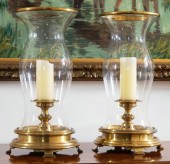 PAIR OF BRASS AND GLASS HURRICANE CANDLE
[more like this]
PAIR OF BRASS AND GLASS HURRICANE CANDLE
[more like this]
-
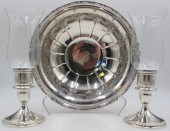 STERLING. ASSORTED STERLING HOLLOWWARE G
[more like this]
STERLING. ASSORTED STERLING HOLLOWWARE G
[more like this]
-
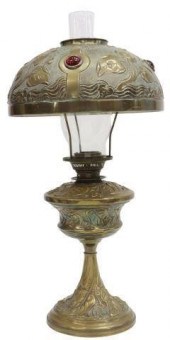 BRADLEY & HUBBARD (ATTRIB.) KEROSENE BRA
[more like this]
BRADLEY & HUBBARD (ATTRIB.) KEROSENE BRA
[more like this]
-
 John P. Cowan (American/Tennessee, b. 19
[more like this]
John P. Cowan (American/Tennessee, b. 19
[more like this]
-
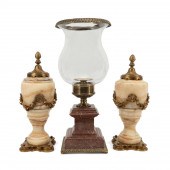 3PCS ONYX & MARBLE URNS & HURRICANE Thre
[more like this]
3PCS ONYX & MARBLE URNS & HURRICANE Thre
[more like this]
There are many more auction results available to our members...





